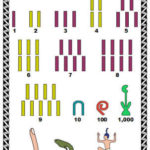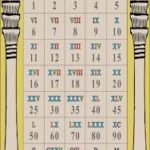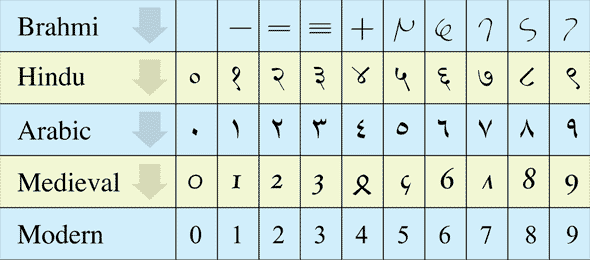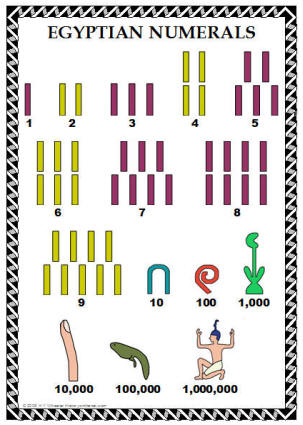History of Counting: I
Counting is an essential part of our lives. Our day begins with counting and ends with counting. We count the number of apples we eat and the litres of milk we buy. We count the money to buy a bar of chocolate and the kilometres we need to travel to reach the city.
As Denise Schmandt Besserat says in his “The History of Counting”, we have taken counting for granted and have forgotten that the method of counting that we use today had to be invented and that it took many centuries to assume the present form.
People did not count the way we do today. Different people used different methods of counting. There was a group of people in Sri Lanka called the Veddas. They were very simple people and lived on fruits and tubers. They did not need huge numbers in their simple lives. Therefore, they used only general terms like “a single”, “a couple”, “another one,” and “many” to count. When a Vedda had to count coconuts, he would collect some pebbles and keep one pebble for one coconut. And say, “a single”. Then he would keep one more pebble, saying “a couple”, then keep one more pebble and say “another one,” and finally would show all the pebbles and say, “so many”.
There was another group of people called Papua in New Guinea. They did not create any special words for counting at all. They used their body parts to count. The left-hand little finger meant 1, the ring finger 2, the middle finger 3, the pointing finger 4, the thumb 5, wrist 6, forearm 7, elbow 8, upper arm 9 and shoulder joint 10. Like this, they could count up to 28. Whenever they had to bargain in the market, they would show their body parts.
There were some groups of people who used a rope to count. They would tie a knot for every ‘One’ they counted. After counting, they would say, “So many”. Some counted by making a notch on the bone. As many notches as the number of things, they had to count.
The way we count today is called “Abstract Counting”. Sumerians were the first people to use abstract counting. They used different symbols for 1, 10, 60, 600, 3600, 36,000. This was a great method of counting, but it did not have zero. To indicate no value, they just left a blank space, which was quite confusing.
Later on, the Phoenicians, who discovered the Alphabet, used the letters of the alphabet for numbers.
A =1, B =2, C=3, D=4,
E=5, F=6, G=7, H=8, I =9,
J=10, K =20, L =30, M = 40,
N = 50, O=60, P=70, Q=80, R=90,
S =100, T=200, U=300, V=400,
W =500, X=600, Y=700, Z=800,
?= 800, ?=900
35= LE
375= UPE
The Egyptians used special symbols for writing numbers. They could write up to 1,000,000. Their symbols are:

The Romans used some of the letters in the alphabet for numerals.

In Roman numerals 5785= MMMMMDCCCCV
Though it was not as complicated as Egyptian numerals it lacked zero. For many years Roman numerals were used. Even today we see Roman numerals in some clocks.
No one knows who invented the numerals we use today.
0 1 2 3 4 5 6 7 8 9
These are called Arabic numerals because they were introduced by Arabs. Arabs called them “Hindu Numerals” because they got them from Indians.
The Indo-Arabic numerals had zero. These numbers were prevalent as early as 500 AD in India. We do not know how long it was in use before that. The first mention of zero is found in the writings of Aryabhatta a great Indian Mathematician, as early as 498 AD. It was called “Shoonya”. The Hindu numerals were

Now, we can count and write up to any number. The largest number is Google. (1 followed by a hundred zeros) and googolplex (1 followed by googol of zeroes). If we needed to count beyond this, we could keep adding zeros like this:
100000000000000000000000000000000000000000000000000000000000000000000000000000000000000000000000000000000000000000000000000000000000000000000000000000000000000000000000000000000000000000000000000000000000000000000000000000000000000000000000000…
Thus, counting has become easy and limitless with zero and nine numbers, i.e. 0, 1, 2, 3, 4, 5, 6, 7. 8 and 9. Zero has made the arithmetic operations of addition, subtraction, multiplication, and division easier. Zero is indeed a great invention of humankind.

